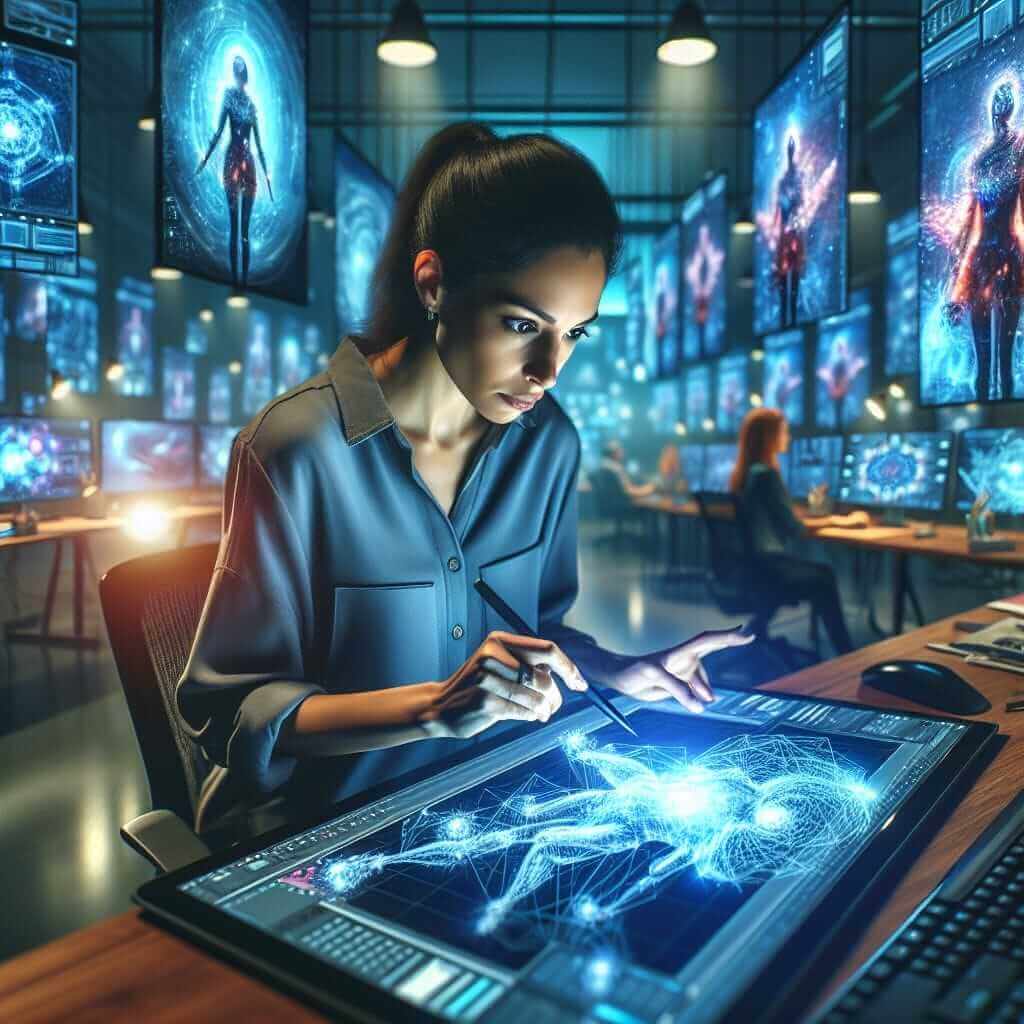In recent times, digital art has increasingly become a significant influence on contemporary culture. This influence is now a common topic in various examination scenarios, including IELTS Writing Task 2. Understanding the impact of digital art not only helps in improving linguistic skills but also aids in gaining broader cultural knowledge.
Potential IELTS Writing Task 2 Prompts
- To what extent has digital art influenced contemporary culture?
- How does digital art compare to traditional art in shaping modern culture?
- Discuss the advantages and disadvantages of the impact of digital art on contemporary culture.
Selected Task: To what extent has digital art influenced contemporary culture?
Analyzing the Task
This type of question asks you to discuss the extent of the influence, which means you need to provide evidence and examples to support both sides of the argument—how digital art has influenced contemporary culture significantly and how it might not have had as much impact in certain areas.
Sample Essay
Digital art has revolutionized the way we perceive and interact with art in the modern age. This essay examines the extent to which digital art has influenced contemporary culture.
Firstly, digital art has made art more accessible to the public. Traditional art forms, such as painting and sculpture, often require physical presence to be fully appreciated. However, with digital platforms, people can now experience art from anywhere in the world. For example, virtual museums and online galleries allow for the exhibition of digital works to a global audience. This increased accessibility has democratized art, enabling a wider appreciation and understanding of various cultures and artistic expressions.
Secondly, digital art has fostered new forms of creativity and innovation. The infusion of technology into artistic practices has led to the emergence of new genres, such as virtual reality (VR) art and interactive installations. These new forms push the boundaries of traditional artistic media, encouraging artists to explore and experiment with technology. This results in richer, more diverse cultural outputs that reflect the evolving technological landscape.
Moreover, digital art has significant applications in marketing and social media, shaping contemporary culture through visual storytelling. Companies and individuals use digital art to create compelling content that captures the audience’s attention, influencing trends and public opinion. Memes, GIFs, and viral images are examples of how digital art permeates everyday life, emphasizing its impact on popular culture.
However, it is essential to acknowledge that digital art also poses challenges. The ease of replication and distribution means that issues of originality and copyright can arise, undermining the value placed on unique creations. Additionally, the sensory experience offered by traditional art forms like sculptures or original paintings cannot be fully replicated digitally, which can limit the emotional connection one experiences with the artwork.
In conclusion, while digital art has significantly influenced contemporary culture by making art more accessible and fostering innovative forms of expression, it has also encountered challenges related to originality and sensory experience. Overall, its impact on modern culture is profound and multifaceted, reflecting both the opportunities and limitations brought about by technological advancements.
(Word count: 352)

Key Considerations When Writing
Vocabulary and Grammar
- Accessibility (n.) – /əkˌsesəˈbɪlɪti/ – The quality of being easy to obtain or use.
- Democratize (v.) – /dɪˈmɒkrəˌtaɪz/ – To make something accessible to everyone.
- Immergence (n.) – /ɪˈmɜː(ɹ)ʤ(ɪ)ns/ – The process of emerging or developing.
- Replication (n.) – /ˌreplɪˈkeɪʃən/ – The action or process of copying or reproducing something.
- Permeates (v.) – /ˈpɜːmɪeɪts/ – To spread throughout something.
Grammar Structures
- Complex Sentences: Combine multiple pieces of information in one sentence, enhancing fluency and coherence. For instance, “While digital art has significantly influenced contemporary culture, it has also encountered challenges related to originality.”
- Relative Clauses: Use to reference information to a specific part of the sentence, such as “digital platforms, which allow for the exhibition of digital works to a global audience.”
Conclusion
Understanding the extent and nature of the influence of digital art on contemporary culture can be a valuable proficiency for IELTS Writing Task 2. It is important to consider both the positive impacts and challenges posed by digital art and to support arguments with clear examples. With thorough practice, one can master essay writing and significantly enhance their performance in the IELTS Writing Task 2.
Additional Practice Prompts
- How does digital art contribute to education and learning environments?
- In what ways has digital art changed the landscape of traditional art galleries and museums?